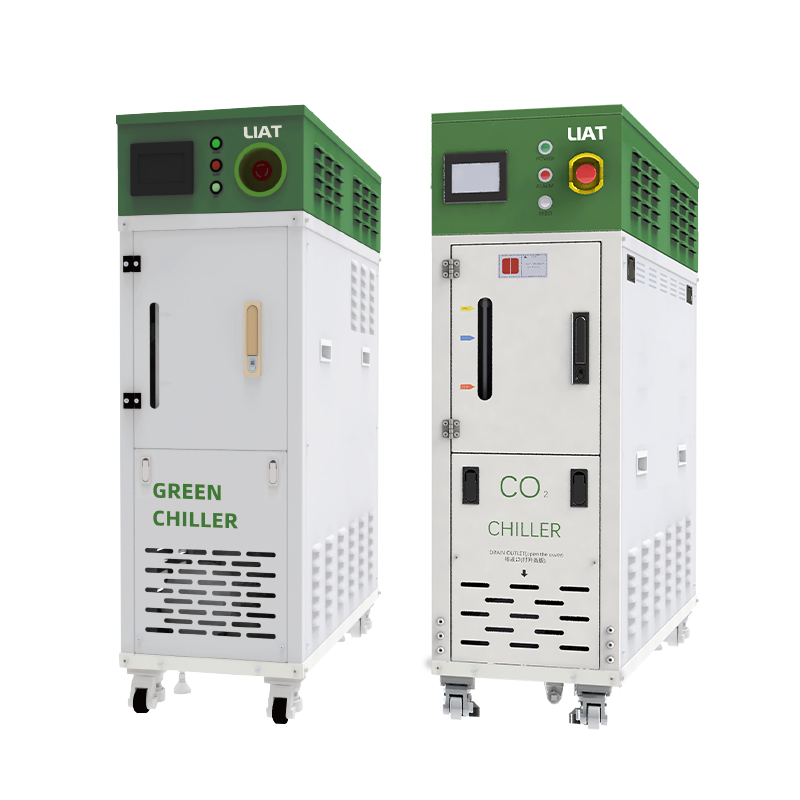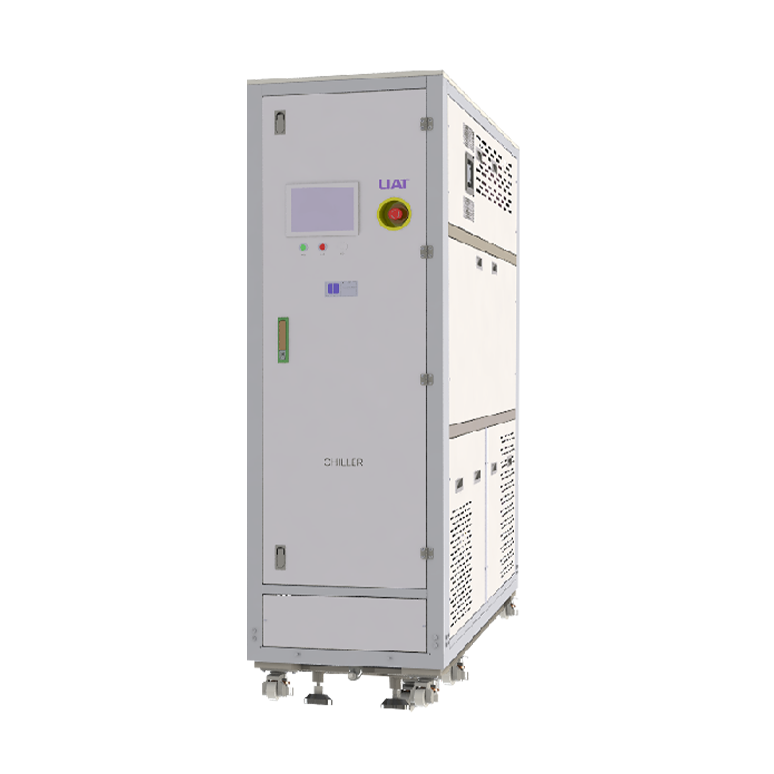The industrial glycol chiller has low-temperature resistance, which is suitable for energy storage system cooling applications. Energy storage system batteries generate heat that must be dissipated, or it may shorten battery life or present safety issues. The industrial glycol chiller can provide a stable low-temperature coolant, which is drained without passing low-temperature heat, making it preferred for cooling applications. The coolant is transferred through pipes to the battery chiller, which then releases it to each battery module. The coolant absorbs heat generated by the batteries. The battery chiller and industrial glycol chiller provide a complete cooling system. It maintains temperature stability and enables the system to function properly.
There are several reasons why industrial glycol chillers are important for battery chillers.

The industrial glycol chiller uses coolant with lower freezing points and works effectively in colder climates. When the energy storage system works at lower temperatures, the coolant in the industrial glycol chiller stays unfrozen. The battery chiller can work normally. The industrial glycol chiller is efficient in the heat transfer process. The chiller swiftly absorbs the heat from the battery chiller and sends it to the atmosphere. With this rapid heat transfer, the battery can get back to its ideal operating temperature in a shorter time. The industrial glycol chiller also maintains strong reliability. The chiller system can operate for long, continuous stretches and deliver consistent temperature control on the battery chiller. This stability is critical for the energy storage system as a whole. Without the industrial glycol chiller, the battery chiller can struggle with inadequate cooling and unstable system control which would dramatically lower the performance of the energy storage system.
The industrial glycol chiller works to maintain battery temperature through a well-planned process.
The industrial glycol chiller is first responsible for pre cooling the glycol coolant to the desired temperature. The pre cooled coolant is then sent to the battery chiller. The battery chiller contains several cooling plates or pipes that are closely connected to the battery modules. When the battery heats up, the battery chiller’s cooling plates or pipes absorb the heat and transfer it to the glycol coolant. The heated coolant is then sent back to the industrial glycol chiller. The industrial glycol chiller cools the heated coolant back down through its refrigeration system. This process is repeated in order to ensure that the battery temperature is maintained within the safe and efficient range. The industrial glycol chiller also has integrated and autonomous intelligent control systems that adjust the chillers operating parameters. This is in order to maintain stable coolant temperatures and provide stable cooling to the battery chiller.
The lifespan of energy storage batteries is significantly influenced by temperature. When batteries are kept in hot conditions for prolonged periods, the chemical reactions of the batteries heat up, leading to the loss of active materials and the reduction in battery capacity. The industrial glycol chiller can provide the battery chiller with the cooling and temperature regulation. The battery chiller can help maintain the temperature of batteries to provide a cooling stable temperature zone. This balance to the environment does provide a certain positive effect, as it slows the chemical reactions of active materials and loses less of the active materials in the battery. This promotes the battery life. For instance, in large scale energy storage facilities, the industrial glycol chiller and battery chiller maintain the battery temperature at a reasonable range, between 25 and 35 degrees Celsius during standard operation. Performing at these conditions allows the battery to enhance 30% to 50% of its stored energy clock to maintain the temperature consistently and provide a cooling stable temperature zone.

Cooling capacity is the first consideration. The cooling capacity of the industrial glycol chiller and the heat generation of the battery chiller should be compared. When the industrial glycol chiller's cooling capacity is lower, it won't fully address the cooling demands of the battery chiller, and the battery temperature is going to rise. When the cooling capacity is too high, it will be a waste of resources and will expand the running costs. The type of glycol coolant is the next factor. Different battery chillers will have different coolant requirements. The industrial glycol cooler will need to identify the proper glycol coolant based on the battery chiller's needs. For instance, some battery chillers need a non-toxic coolant, so the industrial glycol chiller will have to use propylene glycol coolant. The third factor is system compatibility. The control system of the industrial glycol chiller and the system of the battery chiller must be able to communicate and work together to achieve precise temperature control. The glycol chiller's installation and maintenance space also should be unobstructed to allow for ease of upkeep, upkeep, and servicing in the energy storage system.
When we look to the future of the industrial glycol chiller in battery chiller cooling systems, we can expect to see a few new developments. First, look for even greater cooling efficiency. With new advancements in refrigeration tech, the industrial glycol chiller will new advanced energy saving tech to even further reduce energy consumption while cooling. The next development will be the use of a self-containing advanced intelligent control systems. These systems will monitor and control the chillers in real time, and will detect and predict faults and send alerts for maintenance and repair. The third development will be the trend of integration or in other words, a split battery chiller and industrial glycol chiller will be smaller, and will be designed to fit and work with one another while saving space and improving the efficiency of the overall cooling system. Commercial glycol chillers will place a greater focus on becoming more environmental.
It will use more sustainable refrigerants and refrigerating materials, in order to reduce negative environmental impact and address the progressively stricter standards for environmental protection.